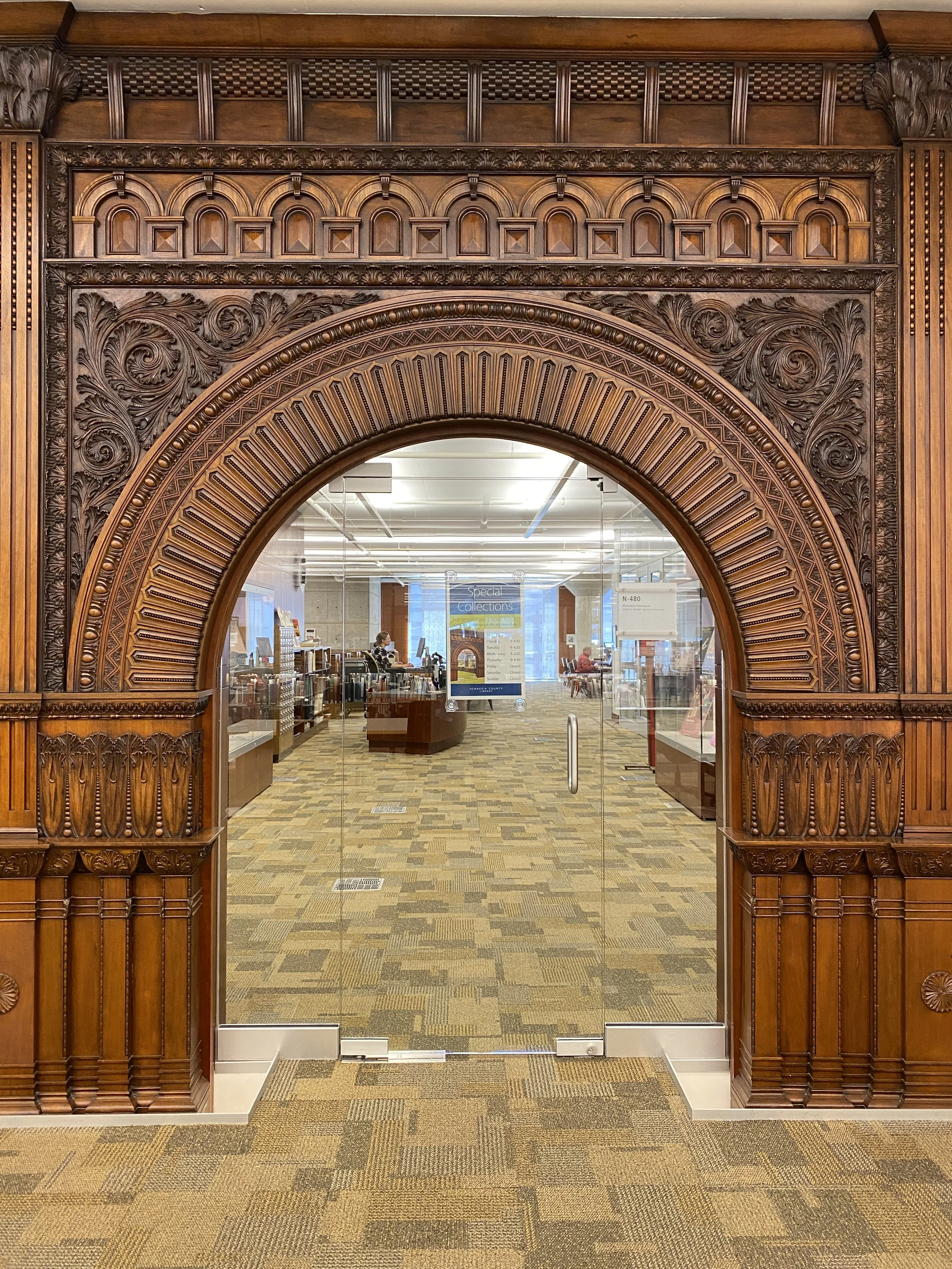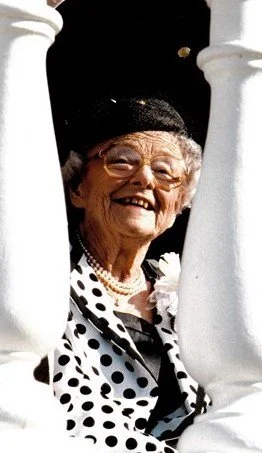Minneapolis Athenaeum
If you’ve ever visited the 4th floor at the Minneapolis Central library, you’ve noticed this giant arched doorway. Behind that door is the Special Collections reading room - which is very special. It contains the collection from the Minneapolis Athenaeum - the first reading library in the state of Minnesota.
A Gift We Take for Granted
It’s impossible to imagine a time when public libraries didn’t exist. We have so many beautiful libraries in Minnesota that we’ve started to take them for granted. But throughout the Northwest Territory, Minnesota Territory and early Minnesota statehood, the only way to access books was if you bought them yourself or borrowed them from their owner - and books were expensive. The average book in 1850 cost about $3.50. Considering the soldiers at Fort Snelling were paid, on average, $5 PER MONTH, a book was a major expense.
The earliest “libraries” in Minnesota were not free. They were inside other businesses or a part of private clubs and charged a “reasonable” fee for people to borrow books. The Minneapolis Athenaeum operated in a similar way. It was a joint stock company that formed in 1859, run by a board of directors, and members paid $2.00 to buy shares in the company. In return, they were allowed to borrow two books at a time. Its first home was inside the bookstore owned by Thomas Hale Williams in the heart of Minneapolis, just steps from the Hennepin Avenue bridge. Williams was the Athenaeum’s first full-time librarian.
The name “Athenaeum” (A-thuh-NEE-um), came from the ancient temple in Rome named after the goddess Athena - the goddess of wisdom. It was a school for learning the arts and sciences. In the early 1800s, the name was used in a revival of educational institutions across Europe and eventually the United States.
The Minneapolis Athenaeum’s board actively recruited new members - the more members, (the more membership fees they collected, the more items the library could buy) - as well as donations. "Contributions of books, maps, charts. etc., will be gladly received and gratefully acknowledged.” It worked. The collection grew very quickly and by 1876 there were 5,715 books on the shelves of the Athenaeum.
As the collection expanded, in inventory and popularity, it also experienced some embarrassing setbacks. When Minneapolis dentist and passionate booklover Kirby Spencer left a small fortune to the Athenaeum after his death in 1870, they were able to buy a lot of new books. But, Kirby’s generous gift, as specified in his will, was only allowed to be used to purchase books and soon the librarians realized they desperately needed money to maintain the books. They also found themselves in the middle of a changing (not in a good way) neighborhood. Their building was aging and cold and it was becoming a bad situation for both their patrons and their books.
Philosophical Standoff
In the midst of this physical crisis, the Athenaeum’s leadership was also facing a philosophical one. The old guard, led by librarian Williams, did not believe that it was in anyone’s interest to provide books for free. In fact, they didn’t believe in any kind of charity. "Why should people have books to read free any more than bread to eat?”
On the other side, was the new guard, led by a familiar name in Minneapolis. Thomas Barlow Walker (Walker Library and Walker Art Center). One of the richest men in America at the time, swept in and staged a takeover. He bought up the voting rights of the shareholders, paid off others’ late fees, and used his new controlling interest to elect a new board of directors. His board oversaw a complete overhaul of the Atheneum, right down to the arrangement of the furniture. Williams was out and a new philosophy was in. Everyone had the right to read books for free.
Within a few years, Walker and his new philosophy about access to written works lead to the Athenaeum pitching the Minneapolis city council the idea of the first public library in Minnesota.
The proceeds from selling the Athenaeum’s original building on Washington were put towards cataloging and moving the collection to the new Public Library building at 10th and Hennepin. This is where I think it gets interesting: the Athenaeum and the Minneapolis Public Library are not one and the same. The Athenaeum is a separate entity that shares space with the library. In 1899, the board signed a 99-year contract that was a mutually beneficial arrangement. The Athenaeum brought an already established and organized collection while the Library provided a physical location and continued funding through taxes. The Public Library was accessed on the first floor, but the Athenaeum was held on the fourth floor. According to the Minneapolis Tribune, "The Athenaeum's place at the top of the new library symbolized its importance in the library's history and the continuing role it plays in partnership with the main library, providing quality and depth to the collection." This relationship helped the library gain nationwide approval and was ranked as one of the top 5 libraries in the country.
Today, with a collection of over 100,000 titles, the Athenaeum is Hennepin County’s most special collection which seems obvious when you approach the giant wooden archway on the fourth floor. An architectural remnant from the previous public library building, the arch embodies the uniqueness and gravitas of the collection behind its doors. Irreplaceable works, like a first-edition hand-painted Audubon “Birds of Minnesota” valued at approximately $12,000,000, are accompanied by a Security Guard. Other works can be brought out of the vault by appointment.
To me (and other local history lovers) the Athenaeum’s most valuable collection includes the earliest books about Minnesota itself. The diaries of the first officers at Fort Snelling, the first translation of the Dakota language by the Pond brothers, the paintings by Eastman and Catlin, and the journals of Hennepin, Lewis and Clark are all available to be read. The Athenaeum is Minnesota’s collection of primary source material on its own past.
That wooden archway is intimidating to walk through, but trust me, it's worth it.












